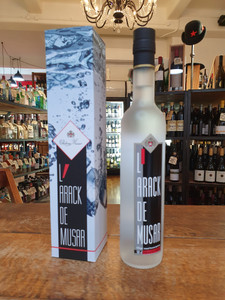
Tasting Note:
Our 2017 vintage looks to be very promising indeed, the wines of this year are unique, yet retaining classical Chateau Musar character. Three factors come to our minds, the similarity in style of the different decades ending in 7, the taste of the last vineyard of Cabernet Sauvignon harvested and powerful aromas. It has a bright ruby colour and there are sweet red cherries, mulberries and plums on the nose with a hint of tea tree and liquorice. The tannins are soft and well-integrated and this vintage has good acidity, depth of fruit and a long finish. Cellared well, it will age beautifully for decades.
Grape Varieties:
A blend of Cabernet Sauvignon, Cinsault and Carignan.
GET INSPIRED. SHOP CAHN’S
Cahn’s is Auckland CBD’s leading expert for premium wine, eclectic spirits, and fine beer. We blend deep knowledge with a fun, personal shopping experience.
QUICK & EASY WAYS TO SHOP
Fast Delivery: We process and dispatch your order swiftly and securely. Get your favourite Pinot Noir, vintage Port, or rare whisky delivered to your door in perfect condition.
Local Collection: Choose In-Store Pickup at checkout. Pop into our welcoming CBD store to collect your order and say hello to Martin, Tristan, or Frankie. It's the perfect way to blend online ease with a local, personal touch.
THE CAHN'S CHALLENGE: WE FIND THE ELUSIVE
Finding it difficult and frustrating to find that elusive beverage that you have been yearning for? We pride ourselves on being able to find most products that are available in New Zealand and, at times, we may even import the product ourselves. We dare you to throw down the challenge. Test us. We are confident that we can deliver on most occasions.
CORPORATE GIFTING: STYLISH & SIMPLE
We offer specific services for Corporates as well. Do you need assistance to choose larger quantities of champagne, whisky or wine as gifts during the year or for the end-of-year festivities? Look no further! We thrive on offering advice and sourcing exactly what you are after. We can supply greeting cards and even write the note (with a Montblanc pen) for you and arrange delivery.








